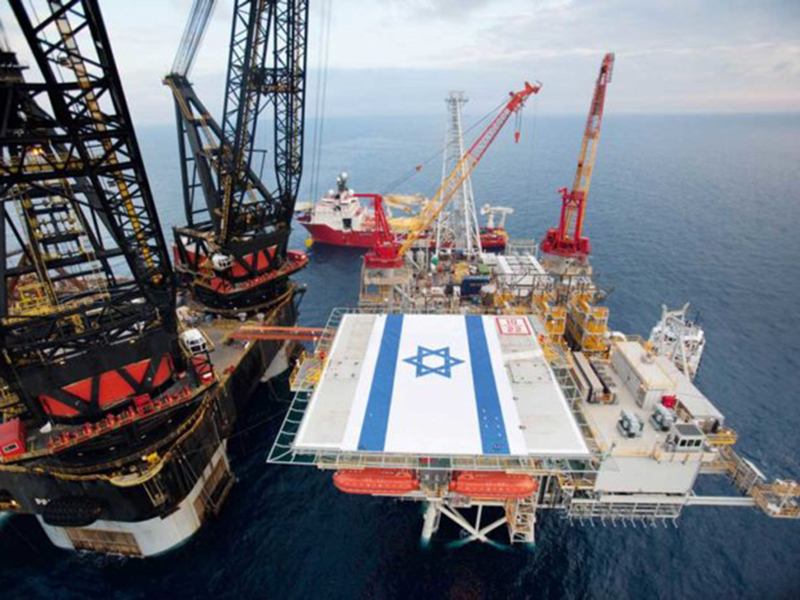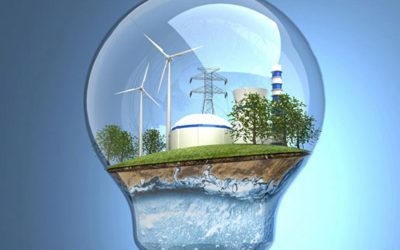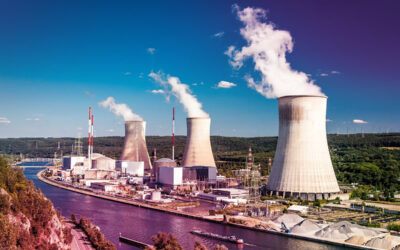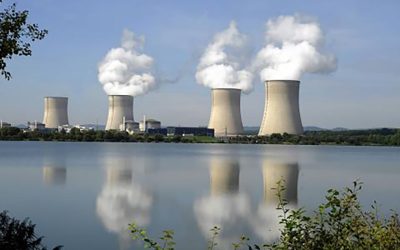
Oğuzhan Akyener, Dr. Abdullah Altun
Since 1990s, the world starts to witness a new wave of globalization which we call global value chains revolution. From a different point of view, the name of this new wave of globalization is second great unbundling (Baldwin, 2007) representing the fragmentation of subphases of production across various geographies. Thus, both exports and final demands of nations start to include considerable amount of foreign value added. One of the most significant outcomes of this new wave of globalization is the rise of China. Now China is one of the most important actors in the global economy and in the global competition. According to projections such as PwC (2017) and OECD (2018), China’s economy probably surpasses the American economy before 2030. China is account for approximately half of all World patent applications in recent years and now leads the pack in many areas especially such as artificial intelligence (AI). Who really responsible for the rise of China is the Multinational Enterprises (MNEs) of developed nations, mainly from USA. Regarding the contemporary power balances of the global world, USA and China become two important poles of current global competition and conflict become much clear with the 2018 trade wars. The rise of the protectionist sentiments by increasing the tariff rates starts to threat the world trade.
The real starting point for the increasing protectionist sentiments and increasing self-sufficiency concerns is the 2007 global food crisis. Then the global economic crisis of 2008, trade wars since 2018 and Coronavirus outbreak since the early days of 2020 all have some similar impacts in terms of self-sufficiency concerns and the protectionist sentiments. Moreover, global container prices have increased approximately fivefold (see Figure 1) just for two years and other delays in transportation due to various reasons are also another source of increasing costs. As a result, there is a tendency towards shortening the length of value chains by focusing on more regional value chains instead of global ones. This increases the significance of regional cooperation.

Figure 1. Global Container Index (Freightos, 2022)
Especially after China starts to close the gap much faster during in recent years, the USA makes significant changes in its foreign policy. Since trade wars of 2018, even in many occasions such as NATO summit in 2021, G7 meeting, withdrawal from Afghanistan, AUKUS Pact, Quad Summit, G20, COP26 and Democracy Summit, this changing foreign policy shows itself.
As to the war between Russia and Ukraine, this war is not only a threat for our region but also for the entire world. Turkey spends great efforts to stop the Russia-Ukraine war by great diplomatic efforts such as arranging the meeting of the Ministers of Foreign Affairs of Russia and Ukraine in the Antalya Diplomacy Forum. Regarding the roles of these two countries in providing important agricultural products to the entire world, this war considerably increases the shortage in agricultural products and the high inflation in food prices. Moreover, this war threats the tourism of Israel and Turkey as two important tourism destinations for Russian and Ukrainian tourists.
The contemporary issues which we are facing recently are not restricted with the abovementioned ones. The climate change appears as a huge threat for the future of our planet. Recently we witnessed really great efforts of nations for reducing emissions. Meanwhile, many developing nations try to access further development targets with increasing energy needs, even some of them become big energy hunger countries such as China and India. The question here is whether some limitations within the context of emissions will prevent them even from providing certain level of basic needs of their society and from development. This paradoxical situation occurs very close to our region. Moreover, both climate change and policies against climate change may result in big migration movements, especially in this region.
The Turkey visit of Israeli President Isaac Herzog as the first visit since 2007 becomes a turning point in Turkey-Israel relations. Two leaders mainly emphasize the significance of the bilateral cooperation in many fields and especially in energy (Anadolu Agency, 2022). Regarding the abovementioned developments in the contemporary global world, bilateral cooperation in many fields such as climate change is also mandatory, and leaders attract interest for them in different occasions (Haaretz, 2022).
East Med Gas Supply Projections
Gas discoveries during the last years, increased the importance of the Eastern Mediterranean (East Med) region from the sight of global policies. There are some huge discoveries in the Egyptian and Israeli maritime borders and smaller ones in the conflicted waters of Cyprus. Lebanon and Syria are (from the sight of possible reserves) other potentially important countries existing in the Levantine Basin.
Surely, there are developed and undeveloped gas reserves in the East Med. In addition, there may be additional huge potential for new possible discoveries. However, there are also big political, commercial and technical unknowns in the gas politics equation of the region and without solving and analyzing these perspectives broadly; it is not possible to make coherent analysis and advices for the future dynamics of the region.
Leastwise, energy, new discoveries and future production profiles are important for the region. However, does having some portion of reserves mean a great opportunity for the due countries? Off course not at all. Long term development scenarios, investment environments, political conflicts, annually expected production – consumption – export volumes, surface – subsurface structures, markets’ properties and the commerciality of the due projects are also important milestones to consider. Without studying these different parameters, it is not possible to make coherent analysis on the energy politics of the region. By considering this fact, it is obvious that, East Med gas equations also has to be studied from a wide range of different factors.
In addition to these, within the current altering political dynamics, highly fluctuating gas prices and Russia – Ukraine war (which makes EU deeply focus on the alternative resources), the balances have to be updated attentively. In the last quarter of 2021, due to the reverberations of the pandemic era, mostly from coal to gas, energy prices of nearly all energy types resulted in massive increases. This situation continued by worsening through the Russia – Ukraine war and the higher levels of gas prices furtherly come to stay.
Undoubtedly, these extraordinary events effected the real dynamics in the East Med from the commercial and political sights.
East Med gas balances are going to be analyzed here by focusing the important milestones existing in different parts of the courses from reservoir to the market. In this regard, annual gas export potentials of the due countries up to 2050, situations of the existing and proposed export infrastructures, market balances and commercial approaches will be explicated. As a result, the question of: “What to expect from the East Med gas potential up to 2050 and later?” will tried to be answered (mainly from the technical sight). In addition to these, possible results of the current political atmosphere (on the conflicts, energy prices, and diversification attempts) will also be taken into consideration.
From one point of view, our aim here is to analyze the East Med gas politics and export possibilities up to 2050’s, from a broader perspective including all the technical, commercial and political aspects.
At the initial step, by neglecting the altering political conflicts in the region, East Med gas balances and technical export potentials of three different regions (Israel, Egypt and Southern Side of Cyprus Island (SSCI) will be evaluated. Undiscovered potential of the region in Lebanon, Syria and Turkey will not be taken into consideration.
While evaluating the export potentials, from reservoir to the market alternatives, all different aspects and milestones will be evaluated for each case.
In this regard, annual gas production and demand volumes, resulting export potentials of the due countries up to 2050, situations of the existing and proposed export infrastructures, market balances and commercial approaches will be explicated.
After completing this technical step, secondly, the possible effects of the global and regional political alterations and dynamics will be included in the analysis. In other words, possible results of the new US foreign policy, energy crisis, Russia – Ukraine War, EU’s pursuits for alternative gas supplies and Turkish – Israeli convergence policy will be tried to commentated.
As a result, the question of: “What to expect from the East Med gas potential up to 2050 and later?” will tried to be answered.
Egypt Gas Export Potential
Egypt is the highest volume of proved gas reserves (around 2,3 tcm) bearing country in the East Med. Moreover, this amount is expected to increase after more tests and drillings to be completed in the new exploration fields.
The main milestone in Egypt’s gas market is to develop newly discovered fields. However, political instability, fluctuating oil prices, regional political disputes, financial/ economic problems and high investment requirements for deep offshore fields complicate the situation. As a result, handling this milestone becomes the main energy strategy of the country.
Although having plenty of reserves, Egypt due to high increase in domestic demand, became a net gas importer instead of being an exporter in 2015. This situation continued up to the end in 2018 and within 2019, net gas balance again became slightly positive with the additional production in new fields.
Gas is the dominant energy resource in the country’s primary energy consumption with a rate of more than 50%. In addition, the strategies followed by the due authorities show that, this rate will continue to increase (Hence, gas being domestic and cheaper). This makes “being a gas exporter country targets” in a difficulty position. Even so, thanks to the new discoveries, country again has become a net gas exporter.
Turkey Energy Strategies & Politics Research Center (TESPAM)’s 2017 long term projections (Akyener and Maraşli, 2017) about the future of Egypt gas export potential can give a coherent approach for analysis (where the due estimations (between 2017 to 2022) are reasonable up to the current time).
Main results of the due projections are given below.
Total annual gas production projections up to 2050, including the potential volumes from new discoveries are given in the Figure 2.

Figure 2: Egypt Total Gas Production Including New Discoveries & Current Fields (Akyener and Maraşli, 2017)
Note: These analysis and projections were done through field base calculations. The details can be reached from the due references.
As can be observed, Egypt seems to have more than 80 bmca gas production rates between 2023 and 2032.
After given the production projections, in order to be able to calculate the net gas balances, we have to add the consumption profiles. In the due study (Akyener and Maraşli, 2017), different assumptions of consumption trends were studied and the below Figure 3 compares the base case consumption estimations with the above production projections.

Figure 3: Egypt Total Gas Production & Consumption (Akyener and Maraşli, 2017).
As the next step, after extracting the consumption from the total production, gas balance graph of Egypt up to 2050 could be prepared as seen in the Figure 4.

Figure 4: Egypt’s Gas Balance (Akyener and Maraşli, 2017)
Videlicet, Egypt has an around 20 bcma (and a little more) surplus between 2022’s and 2032’s and again a huge increasing deficit after 2035’s in its gas balance.
Then, the export potential of the country is given in the Figure 5.

Figure 5: Egypt Gas Export Potential (for annual consumption incremental rate is 1.5%) (Akyener and Maraşli, 2017).
As can be observed from the Figure 5, in the most optimistic scenario, Egypt will totally have around 283 bcm gas to export and the average peak rate can be accepted over 25 bcma.
However, while taking the domestic gas consumption annual incremental rate as 2%, total gas to export volume will be around 260 bcma and the average peak rate can be accepted below 25 bcma. Moreover, while taking the domestic gas consumption annual incremental rate as 3% (which seems a better choice while considering the ongoing trends of Egypt between 2017 to 2022), then total gas to export volume will be around 224 bcma and the average peak rate can be accepted below 20 bcma.
Now, next step will have to be the analysis of possible export routes. Hence, for a gas field to be invested and developed, a commercial market reach has to be accomplished.
In this regard, for Egypt, in order to export its surplus gas to the global markets, initially we have to mention that, the country already has 2 domestic LNG facilities and 2 export pipelines.
LNG export plants are IKDU ELNG Plant with a capacity of around 10 bcma and Damietta LNG Plant with a capacity of 6.8 bcma. In addition, the export pipelines are Arish–Ashkelon pipeline to Israel with a capacity of 9 bcma and the Arab Gas Pipeline with a capacity of 10.3 bcma to Jordan. However, the export pipelines may require maintenance works to be utilized with the due capacities. Moreover, for the pipeline exports, due markets’ demands also have to be considered. Now, Israel is a net gas exporter and is feeding (meeting the due demand in) the Jordan market. Which takes the pipeline routes out of the game.
On the other hand, the current infrastructures seem as nearly enough within the current conditions. In other words, Egypt will be a self-sufficient country regarding with the gas export volumes and existing domestic gas export infrastructures comparison. Egypt will not look for new investments and use its unused volumes of existing LNG facilities for gas exports. This strategy will be also the cheapest one by considering the cost profiles.
Note: After due offshore discoveries (such as Leviathan’s new phases) being developed, some portion of surplus gas of Israel (for a shorter period) also may be considered to be transported to Egypt’s LNG facilities (via Arish–Ashkelon pipeline) and then to be exported. However, because of the main obstacles placed by the unknowns about the free LNG capacity of the existing terminals and political instability, this option stands with big question marks to be realized.
Israel Gas Export Potential
Israel is the second important proved gas reserves (with around 1 tcm) bearing country in the region.
Again, as in the Egypt side, TESPAM’s 2016 long term projections (Akyener, 2016) about the future of Israel gas export potential can give a coherent approach for analysis (where the due estimations (between 2016 to 2022) are reasonable up to the current time).
Main results of the due projections are given below.
Total annual gas production projections (on field base) up to 2050, including the due important discoveries are given in the Figure 6 below.

Figure 6: Israeli Gas Production Forecast up to 2050 (Akyener, 2016).
As shown from the Figure 6, Israel will have such a gas production potential of 30 bcma after 2030’s.
After evaluating the production projections of the important fields in Israel, by considering the demand profile, export potential has to be analyzed.
For future gas demand profile of Israel, a study of Israel’s Ministry of Energy and Water Resources, named “Israel’s Natural Gas Demand Forecast 2011-2040” is used. Between the years 2041 to 2050, average incremental rate of the existing forecast (0,6 bcma) is added to the previous year’s value.
As shown in the graph below, production values in Figure 6 and the 2050 demand profiles are combined.

Figure 7: Israel’s Production & Demand Profiles (Akyener, 2016).
As a result, the gas balance graph (Figure 8) was prepared.

Figure 8: Israel Gas Balance and Export Potential up to 2050 (Akyener, 2016).
According to the Figure 8:
-Israel will only have a chance of 20 years to be a gas exporter in the region (by not considering the new possible discoveries).
-Export volume potential, in comparison, is not as high as Egypt.
-By putting a downside limit for long term gas sales agreements; as shown with the orange line in Graph 7, around 5 bcma is available for Israel to make (such long term) contracts.
-The extra volume of gas (which can be accepted as the upside potential after extracting the 5 bcma long term part) can be sold in spot markets or with short term agreements.
-After 2040 Israel will have to check for solutions to fill the gap of its gas demand.
However, in addition to these, with new investments, Israel EEZ area has additional potential structures (interpreted in the seismic studies) waiting to be discovered. This may be a game changer for the area.
Gas Export Potential in the Southern Side of Cyprus Island
In the southern side of Cyprus Island, there exist some new discoveries that could not be taken into development phase. According to TESPAM’s calculations, these discoveries approximately bears around:
-118 bcm reserves in Aphrodite ,
-116 bcm reserves in Calypso,
-89 bcm reserves in Glaucus.
At the current situation, due to the conflicts on the Cyprus Island, none of these structures can find change to be invested and taken into production. On the other hand, hence, all these reserves are dry gas, which makes LNG costs too high to handle, the only way is to reach a possible market through a new pipeline project. However, it was globally accepted that doability of the popular proposed East Med Pipeline Project is impossible (from the economic, commercial, technical, legislative and political aspects). This results in Turkey to be the unique market and the possible transit route for the Cyprus Island (including the Northern Side) possible gas sales.
After noting this fact, by assuming the conflicts in Cyprus solved and Turkey agreed on to transport and buy the Israeli plus Cyrus Island gas, then the due reserves can be developed and taken into production in such a projection below.

Figure 9: SSCI Gas Export Potential up to 2050 (Akyener, 2016).
Note: First production for all these three fields are assumed to be started in 2028.
As can be shown from the Figure 9 above, the total supply volume from the SSCI may reach in a tantalizing level for EU markets. However, without reaching an acceptable solution with Turkey and Northern Cyprus, all these discoveries will have to be locked in the underground levels.
Total Gas Export Potential in the Region
As mentioned above, technically by analyzing the possible gas export projections in the East Med we encounter with the reality of:
-Hence being in a position to have the ability to export its gas from the existing LNG infrastructures, Egypt is out of the equation.
-Israel has additional around 5 bcma export potential. However, to make such exports, needs to find a reliable and economic market reach. (There are huge question marks in Egypt free LNG capacity utilization options.)
-In addition to this, Israel also have possible new structures (interpreted in the seismic studies) waiting to be invested and tested, which can be accepted as new reserves. That’s why again for Israel to find investors for these new projects, the country needs a possible export route.
-There is an important volume of export potential in SSCI. However, due to the existing conflicts, there will not be any real investments for the further development projects.
-By understanding that Israel additional export potential and the SSCI discoveries can be exported together, then the total volume to discuss in the view will be around a peak of 25 bcma.

Figure 10: Israel + SSCI Gas Export Potential up to 2050 (Akyener, 2016).
This is the technical reality, for the future analysis. However, the policy side directly affects the decisions in the region.
Discussions
-Egypt, hence being in a position to have the ability to export its gas from the existing LNG infrastructures, is out of the equation of all political discourses.
-Israel has additional around 5 bcma export potential by analyzing the long-term sales possibilities. However, again to make such exports, needs to find a reliable and economic market reach.
-In addition to this, Israel also has possible new structures (interpreted in the seismic studies) waiting to be invested and tested, which can be accepted as new reserves. This means; again, for Israel to find investors for these new projects, the country needs a possible export route.
-There is an important volume of export potential in SSCI (around 18 bcma plateau rate). However, due to the existing conflicts, there will not be any real investments for the further development of the due projects.
-Israel’s additional export potential and the SSCI discoveries can be exported together, which means the total volume to discuss will be around a peak of 25 bcma.
-This is a good volume by comparing the gas supply security concerns of EU.
-This volume politically and economically can be transported to EU only through a route on Turkey.
-Just focusing EU as a consumption market for East Med gas has some risks. Since EU’s energy financing and consumption pattern for accessing 2030 and 2050 emissions targets doesn’t offer sustainable and consistent consumption pattern for the East Med gas. European Investment Bank (EIB) stops financing the fossil fuel energy projects, including gas, since the end of 2021 (EIB, 2019). Even EIB stops financing the low-carbon projects of polluting companies such as the wind energy projects of oil companies (The Guardian, 2021).
-Turkey is also the biggest, reliable, sustainable and commercial gas market in the region (which is a more profitable option for the gas suppliers in the East Med).
-Balkan countries haven’t got such a rigid approach as other EU countries in terms of climate actions. Regarding their closer borders to Turkey, a possible pipeline through Turkey to EU will also benefit both from Turkey and Balkan Markets.
-Turkey’s contributions may realize the solutions not only in Cyprus conflicts but also in Israel-Lebanon Maritime unrests.
-Energy and water problem of the whole Cyprus Island may be resolved by the help of Turkey.
-Current political climate can be used as a leverage to solve all these blocked issues in the region.
-In this concept gas trade opportunities can be used as a leverage point.
Importance of East Med increased with the huge gas discoveries in the region. Moreover, while the world is going through a war climate, resulting energy price fluctuations, EU’s diversification policies and gas crises doubled the attention on the region. Therefore, the demand for export of these resources to the world (mostly EU) markets become stronger.
By analyzing from the technical perspective, for long term gas sales considerations,
-there is around 20 bcma plateau export level for Egypt,
-there is around 20 bcma plateau export level for SSCI,
-there is around 5 bcma plateau export level for Israel.
Egypt is out of the equation and political arguments; hence, it has a self-sufficiency to produce and export its gas through existing LNG facilities. Which means, Egypt does not have any conflicts or problems in for the critical exports.
However, for Israel’s additional volumes and the SSCI’s possible exports, a new commercial and secure route and infrastructure has to be realized. In addition, the only route for such an attempt can be achievable through Turkey (and with the permission of Turkey).
Other routes are commercially and politically inapplicable.
On the other hand, there are big and difficult (conflicted) milestones for a possible Turkey route. However, current political climate may offer some unexpected opportunities into the intertwined dynamics in the region.
References:
Akyener, O. and Maraşli, A. (2017). “Egypt Gas Export Potential Up To 2050 & Regional Gas Policies” Energy Policy Turkey, 3 (3), p. 17, Available at: www.energypolicyturkey.com
Akyener, O. (2016). “Future of Israel Gas Export Up To 2050 & Turkey,” Energy Policy Turkey, 2 (2), Available at: www.energypolicyturkey.com
Anadolu Agency (2022). “Reviving political dialogue based on common interest ‘joint goal’ of Turkiye, Israel: Erdogan”, Available at: https://www.aa.com.tr/en/turkey/reviving-political-dialogue-based-on-common-interest-joint-goal-of-turkiye-israel-erdogan/2529384
Baldwin, Richard (2007). “The Great Unbundling: Does Economics Need a New Theory of Offshoring?” The Economist. https://www.economist.com/finance-and-economics/2007/01/18/the-great-unbundling
EIB (2019). “EU Bank Launches Ambitious New Climate Strategy and Energy Lending Policy”, Available at: https://www.eib.org/en/press/all/2019-313-eu-bank-launches-ambitious-new-climate-strategy-and-energy-lending-policy.htm
Freightos (2022). “Freightos Baltic Index (FBX): Global Container Freight Index”, Available at: https://fbx.freightos.com/ (Accessed 29.05.2022)
Haaretz (2022). “Israel’s Herzog Discusses Climate Change Cooperation With Turkey, Jordan and UAE”, Available at: https://www.haaretz.com/israel-news/2022-05-18/ty-article/.premium/sources-herzog-discusses-climate-change-cooperation-with-turkey-jordan-and-uae/00000180-e9f2-d189-af82-f9ff5b890000
OECD (2018). GDP long-term forecast (indicator). doi: 10.1787/d927bc18-en (Accessed on 08 June 2021).
PwC (2017). How Will the Global Economic Order Change by 2050? London: PricewaterhouseCoopers.
The Guardian (2021). “European Investment Bank to End All Loans to Oil and Gas Firms”, Available at: https://www.theguardian.com/world/2021/oct/28/european-investment-bank-to-close-loophole-allowing-it-to-lend-to-oil-and-gas-firms






